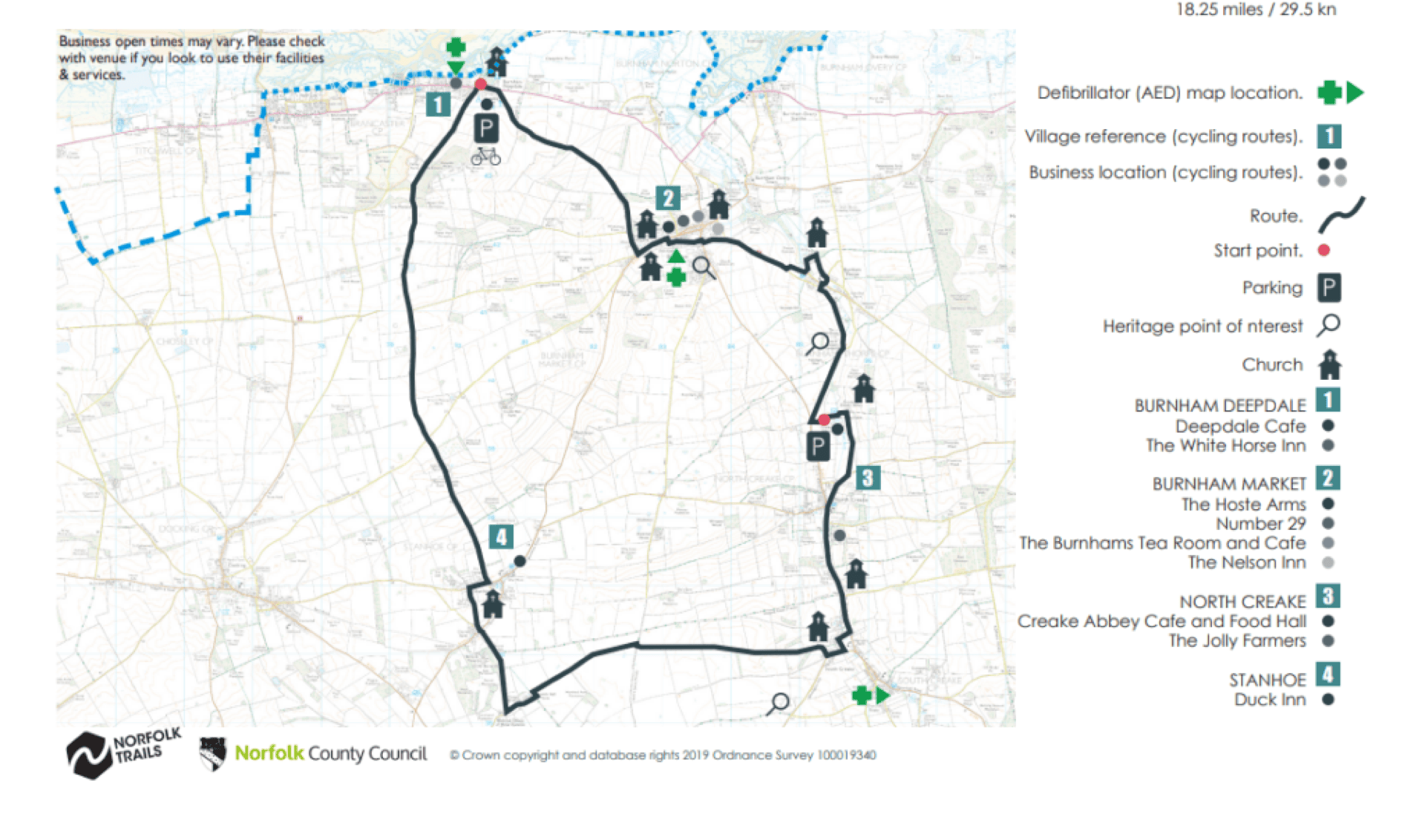Clues to historic military campaigns of air, land and sea are hidden among the tranquil villages of west Norfolk’s Nelson Loop.
Begin your cycle route at the parsonage of All Saints’ Church at Burnham Thorpe. A plaque marks the 1758 birthplace of Admiral Lord Nelson, born here when his father, Edmund, was rector. Nelson died at the Battle of Trafalgar in 1805 after a victorious career, celebrated at the church.
When the villages of Burnhams Ulph, Sutton and Westgate were absorbed by Burnham Market, the new boundaries formed one parish containing five churches. Two are gone, but you can see the ruins of St. Ethelbert’s at Burnham Sutton. And both St. Mary’s at Burnham Westgate and All Saints’ at Burnham Ulph remain in regular use. Beyond the Burnhams, you’ll pass Stanhoe Hall, where a World War Two Wellington bomber crashed in 1943. In contrast, the villages of Great and Little Barwick have a peaceful history, though smaller now than in their medieval heyday. At this time, nearby North Creake was dominated by beautiful Creake Abbey, an Augustinian priory elevated to abbey status in 1225. When plague killed the last abbot in 1506 the beautiful buildings fell into picturesque ruin.
Finally, at South Creake the village sign records a furious battle between Danes and Angles, a slaughter so terrible the hill is still named Bloodgate. The enigmatic traces of an Iron Age earthwork ‘hillfort’ are all that remain of this turbulent chapter in Norfolk’s distant past.

